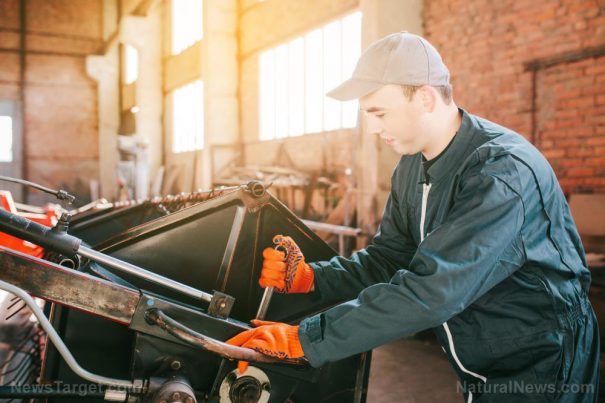Prepper projects: Tips for building and repairing
Tuesday, March 23, 2021 by Virgilio Marin
http://www.bugout.news/2021-03-23-prepper-projects-tips-for-building-and-repairing.html

A lot of things will need repair after an SHTF event, such as a blown tire or a leaky roof. Unfortunately, professional help will rarely be available, if not completely absent. When disaster strikes, it will be up to you to repair things at home or even build minor structures. Check out the following tips for building and repair: (h/t to SurvivalSullivan.com)
Be prepared to fix all kinds of things
Different kinds of things will get broken in the event of a natural disaster. Therefore, it makes sense to be prepared and learn how to repair all kinds of things. Take the time to hone your skills in the following areas:
- Home – Learn to replace roofing shingles and panels; frame in exterior walls; replace or add siding; re-wire branch and switch wiring; and add insulation, among other things.
- Firearms – Learn to clean your gun and replace its components.
- Vehicle – Learn to change or repair a damaged tire; change or charge your car battery; change alternator; top off or change oil, coolant and other fluids; and replace bulbs, among other things.
- Electronics – Learn to clean or replace components; diagnose electrical shorts and other problems; and test power supply, among other things.
- Clothing – Learn to patch rips, sew on buttons and replace zippers, among other things.
While it is an advantage to have formal training, the good news is that you don’t need to be a professional to perform these repairs. You just need to be able to fix common breakages.
Use your resources
There are several how-to guides online that will help you troubleshoot and mend common problems at home. Use these resources to your advantage. Since communication towers will likely be down when SHTF, it will be in your best interest to start training now so you’ll be prepared to deal with any kind of breakage when the time comes. You can also print out manuals or download them to your devices in case you don’t have time.
Hone your building skills
Building skills are essential for preppers. When preparing for a long-term survival scenario, for example, you might need to build an outdoor toilet and a slit trench for human waste disposal.
You will also find that some damaged things (e.g., a dilapidated shed) are simply beyond repair. Knowing how to build things from scratch will be important when shoring your survival chances up against whatever disaster comes your way. (Related: The smart prepper knows how to build simple machines in the event of a collapse.)
Keep repair and building tools
Keep the basic repair and building tools at your home and your bug-out location. Take note that you don’t need all kinds of tools that professionals usually carry. You just have to keep the most commonly used homeowners’ tools so that you can do the repairs you’re most likely to encounter. These include a hammer, screwdrivers, a handsaw, chisels, duct tape, pliers, wire nuts, screws and nails.
Prepare for repair on the go
You might come across several kinds of problems on your way to your bug-out location. For example, your survival vehicle might get stuck in a rut or your handgun might not be working. It’s important to be prepared for these types of emergencies. Keep the following items in your bug-out bag or inside your survival vehicle:
- Boy’s axe or hatchet
- Folding saw
- Bush knife
- Folding shovel or E-tool
- Nails of various sizes
- Duct tape
- Cordage, paracord or accessory cord
- Tarp with heavy-duty grommets
Building and repairing things are essential prepping skills that are especially valuable in situations where professional help is unavailable. Hone your repair and building skills now to be prepared when SHTF.
Sources include:
Tagged Under: Tags: bug out, emergency, home repair, homesteading, how-to, preparedness, prepper, prepping, prepping skills, survival, survival gear, survivalist, tips, tools
RECENT ARTICLES
COPYRIGHT © 2017 · BUGOUT NEWS


